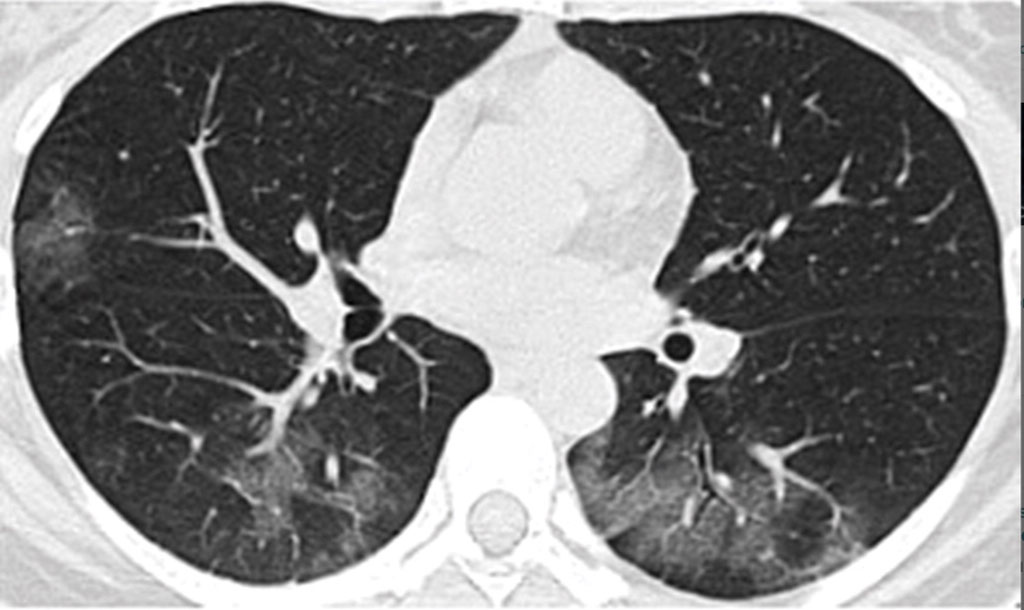Radiologists Identify Coronavirus CT Imaging Feature
By MedImaging International staff writers
Posted on 17 Feb 2020
A new study describes computed tomography (CT) imaging features that aid in the early detection and diagnosis of the 2019-nCoV Wuhan coronavirus.Posted on 17 Feb 2020
Researchers at Sun Yat-Sen University (Guangzhou, China), Mount Sinai Health System (MSHS; New York, NY, USA), and other institutions undertook a retrospective case series involving 21 patients (13 men, mean age 51.2 years) in three hospitals in China with confirmed 2019-nCoV infection, and who underwent a chest CT. The initial CT scan was evaluated for the presence of ground-glass opacities and consolidation; the number of lobes affected; degree of lobe involvement; the presence of nodules, pleural effusion, and thoracic lymphadenopathy; and underlying lung disease such as emphysema or fibrosis. Any other thoracic abnormalities were also noted.

Image: CT manifestation of the 2019-nCoV Wohan coronavirus (Photo courtesy of MSHS)
The analysis showed that 2019-nCoV typically manifests with bilateral ground-glass and consolidative pulmonary opacities on CT. Nodular opacities, crazy-paving pattern, and a peripheral distribution of disease may be additional features helpful in early diagnosis. The researchers also noted that lung cavitation, discrete pulmonary nodules, pleural effusions, and lymphadenopathy are characteristically absent in cases of 2019-nCoV. Follow-up coronavirus imaging in seven of eight patients showed mild or moderate progression of disease, as manifested by increasing extent and density of airspace opacities. The study was published on February 4, 2019, in Radiology.
“Early disease recognition is important not only for prompt implementation of treatment, but also for patient isolation and effective public health surveillance, containment and response,” said lead author Michael Chung, MD, of MSHS. “Our patient population is unique from other published series on the Wuhan coronavirus in that three of our patients had normal initial chest CTs. One of these patients progressed three days later and developed a solitary nodular ground-glass lesion in the right lower lobe, indicating this pattern may represent the very first radiologically visible manifestation of disease in some patients infected with Wuhan coronavirus.”
The newly discovered coronavirus emerging from Wuhan City, in Hubei Province (China), belongs to a family of viruses that include Severe Acute Respiratory Syndrome (SARS) and Middle East Respiratory Syndrome (MERS). Additional cases have been identified in a growing number of countries, including the United States. Many of the initial patients in the outbreak in Wuhan reportedly had some link to a large seafood and animal market, suggesting animal-to-person spread. The outbreak is escalating quickly, with thousands of confirmed 2019-nCoV cases reported globally.
Related Links:
Sun Yat-Sen University
Mount Sinai Health System














